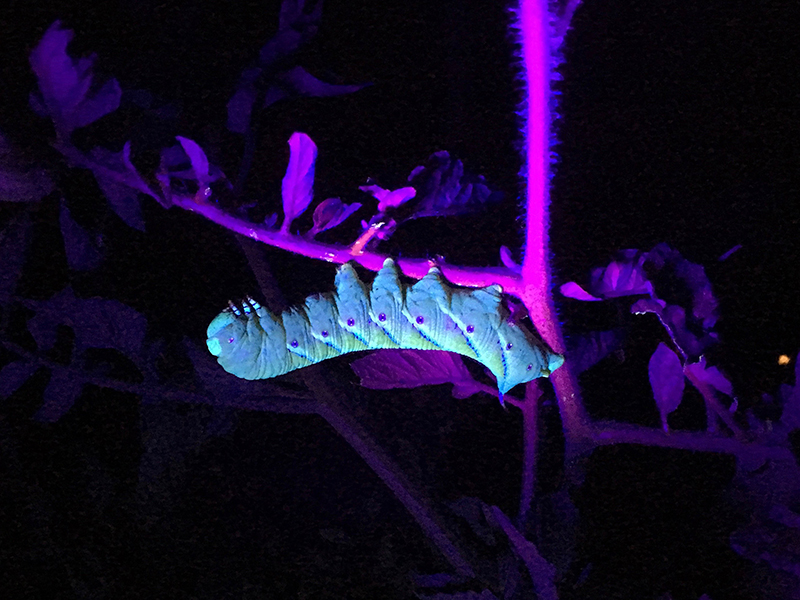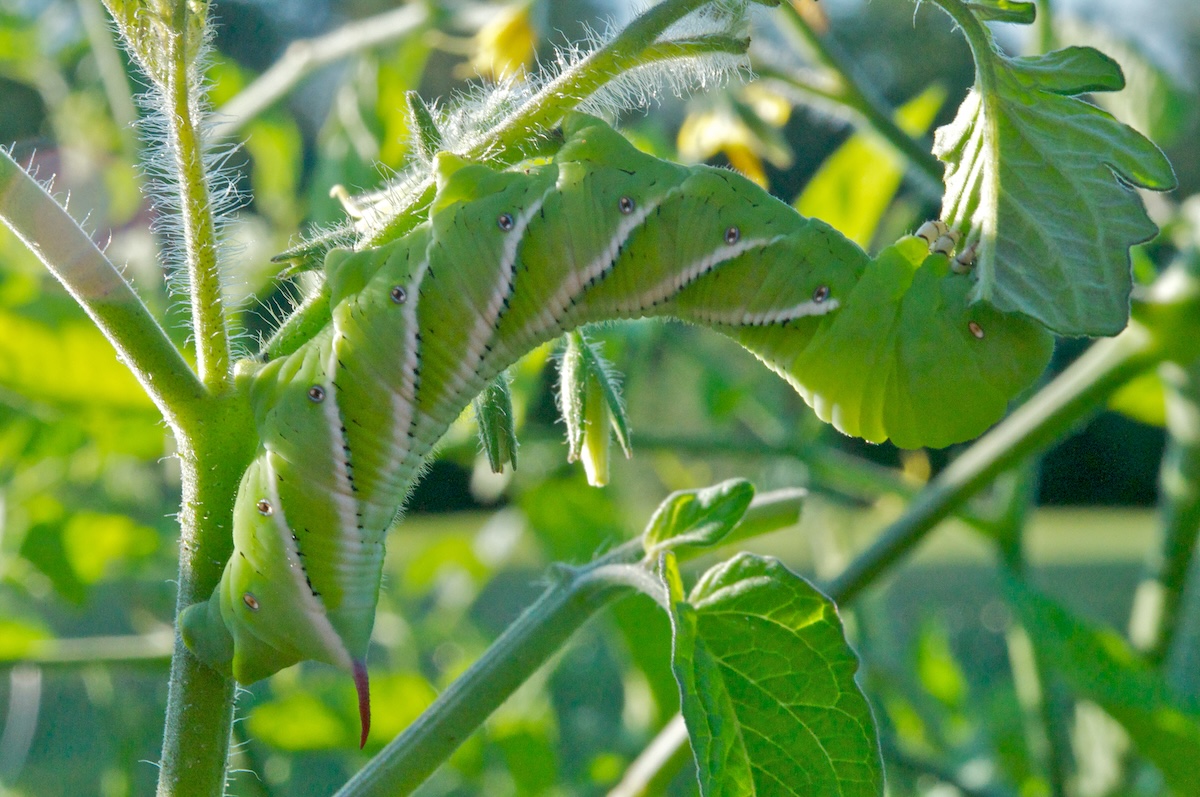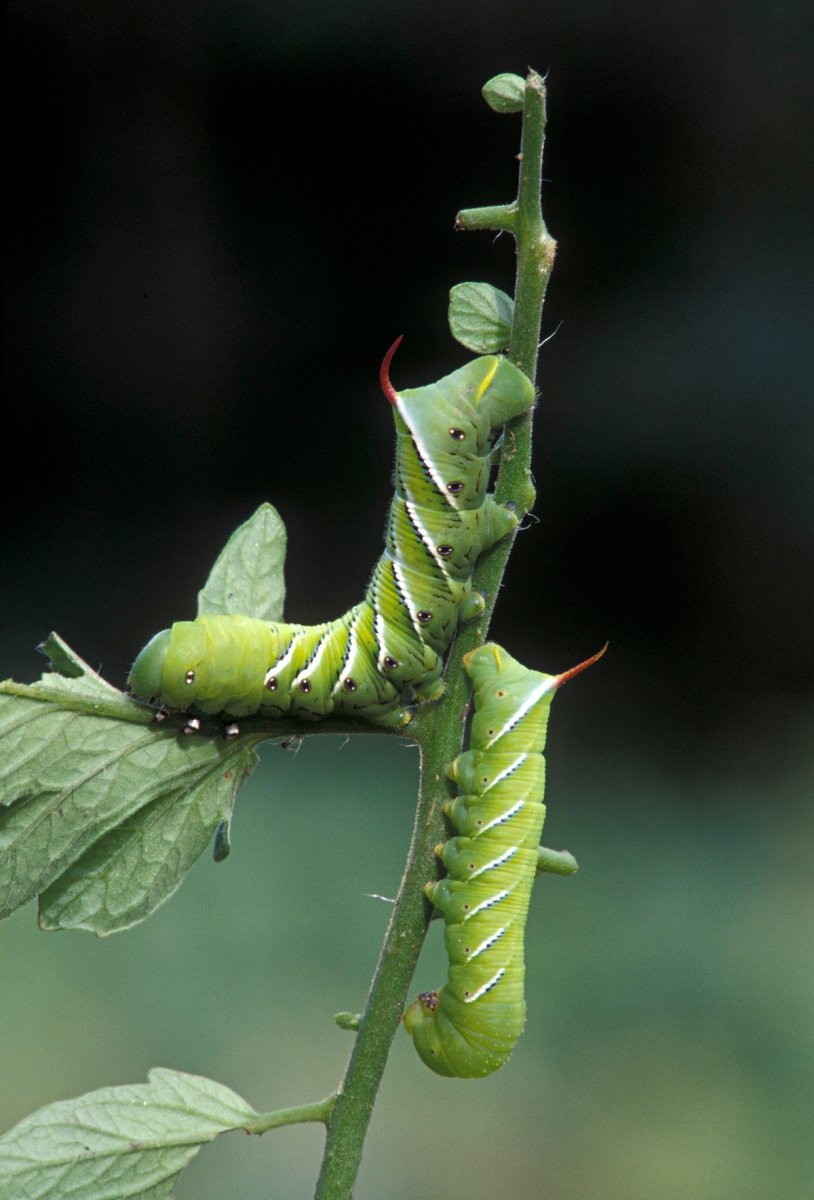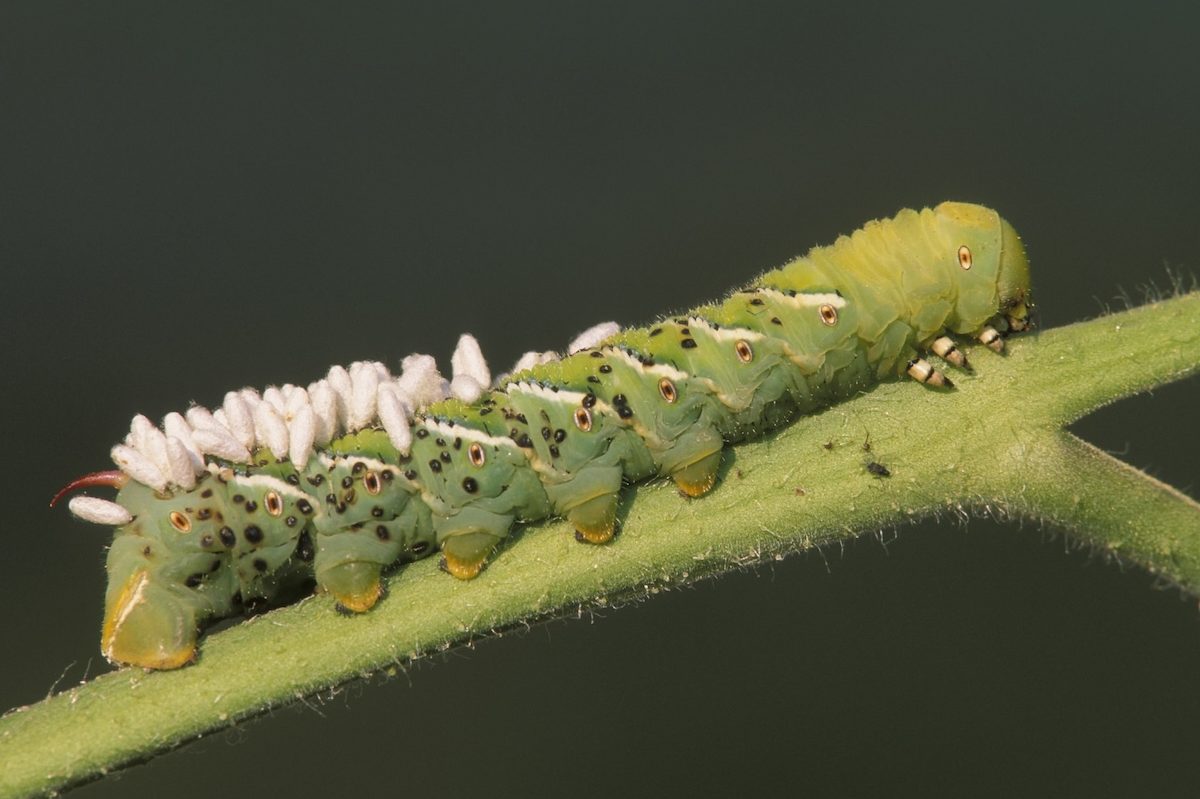

We may earn revenue from the products available on this page and participate in affiliate programs. Learn More ›
If you grow tomatoes, peppers, eggplants, or other nightshades, there’s a good chance that you’ve encountered large green caterpillars feeding on your plants. Known as the tobacco or tomato hornworm, the common caterpillar is one of the primary pests of nightshade plants. While feeding, they can skeletonize leaves, bore holes in tomato fruit, and even defoliate entire crops of tomatoes in just a few days.
But while tomato hornworm damage can be significant, it’s relatively easy to get rid of caterpillars on tomato plants without pesticides. From companion planting to handpicking, you’ll find the best ways to prevent and control tomato caterpillar pests below.
What Are Tomato Hornworms?

Hornworms are the caterpillars of sphinx moths, also known as hummingbird moths, hawk moths, or the horned tomato worm moth. There are about 1,400 species of hornworms in the world and most of them don’t damage garden plants. In fact, sphinx moths are excellent pollinators and can actually be assets to gardens.
But while most hornworms don’t spell trouble for gardeners, tobacco and tomato hornworms (Manduca quinquemaculata and M. sexta) are the exception. These are the worms that eat tomato plants and they are easily recognized by their bright green bodies and the tiny horn that stands aloft on their rears. That horn is just for show; these caterpillars don’t sting or bite, but they grow rapidly and can stretch up to 5 inches long before they burrow into the soil, pupate, and turn into adult hawk moths, starting the cycle all over again.
Signs of a Tomato Hornworm Infestation
Despite their large size, hornworms blend easily into plant leaves and stems, which makes them surprisingly difficult to spot. One of the best ways to sight these pests is to look for barrel-shaped tomato hornworm droppings on the top of plant leaves. You’ll usually find a horned tomato caterpillar hiding near the soiled leaf.
Hornworm woes can also be diagnosed by the damage these pests leave behind. Just a few hornworms on tomato plants will riddle plant leaves and fruit with holes, while larger hornworm populations can defoliate entire plants overnight. If your nightshades have been reduced to nubby stems and skeletonized leaves, you’re likely dealing with hornworms.

How to Get Rid of Tomato Hornworms Naturally
Aimée Code, pesticide program director at The Xerces Society, advocates for a less-is-more approach when it comes to controlling hornworms.
“First, consider whether the caterpillars are actually destroying your plants,” says Code. “A large planting of tomatoes can often withstand some hornworm feeding,” she says. To keep hornworms away, she recommends nature-friendly pest prevention techniques like trap cropping. “If you are a lover of pollinators like I am, consider planting extra nightshade plants in a separate space as a sacrifice,” suggests Code.
Companion planting with marigolds and basil is another natural tomato hornworm prevention strategy. “I plant basil around my tomatoes just like my grandmother,” says Code. For one, she gets to enjoy fresh basil all season. “The basil acts as a repellent limiting the likelihood that moths will lay [tomato hornworm] eggs on my plants,” she says. Code also recommends tilling badly infested gardens at the end of the season to disrupt the pupae in the soil.
If the caterpillars are damaging tomato plants, how to get rid of hornwoms naturally is to handpick them. Code recommends placing them into a bucket of soapy water after handpicking.
Tools & Materials
Bobvila.com may earn a commission from purchases made through these links.
Project Overview
Working Time: 30 minutes
Total Time: 30 minutes
Skill Level: Beginner
Estimated Cost: $15
Before You Begin
While hornworms don’t bite or sting, gardeners who are squeamish about touching the large bugs may want to don gardening gloves before going on a hornworm hunt.
STEP 1: Look for hornworms from dusk until dawn.
Hornworms are much easier to see when they’re most active. This is typically from dusk to dawn, much like the adult moths. During the sunny part of the day, they camouflage under leaves or on stems, and are tough to spot in full sun. If you suspect tomato hornworms are present, look for them at dawn, dusk, or nighttime when they are feeding.
Gardeners who need to look for hornworms during the day often can spot them by spraying the plants with a garden hose and watching for movement.
STEP 2: Use a blacklight to spot hornworms.
Sweep a small blacklight flashlight across your plants to spot hornworms. Hornworms glow like neon lights in the beam of a blacklight.

STEP 3: Drop hornworms into a bucket of soapy water.
Pluck hornworms off the affected plants and drop them into a bucket of water mixed with a squirt of dish soap, which will kill the caterpillars. Check the tops and undersides of plant leaves for hiders. “If you find a hornworm with what looks like grains of rice on its back, leave it be,” Code advises. “Those are eggs of a parasitic wasp that feed[s] on hornworms.” They will soon kill their host.
STEP 4: Repeat.
Check for hornworms at least twice a week to catch any stragglers you missed during your initial garden sweep. Repeating hornworm hunts throughout the season will keep nightshades caterpillar-free.
Final Thoughts
One of the most common mistakes gardeners make is to not plan for pests. Plant pests like hornworms are an inevitable part of gardening. But they are less likely to invade gardens if you plan ahead and use natural pest control strategies like companion planting with borage, yarrow, and parsley, attracting birds and beneficial insects, rotating crops, and cleaning up infested plant material in fall.
If you do spot hornworms, remember that these “pests” aren’t always damaging and they are pollinators, too. Growing some sacrificial nightshades or learning to live with a few nibbled plant leaves can make gardening less stressful and give these pollinators some room to do their work.
